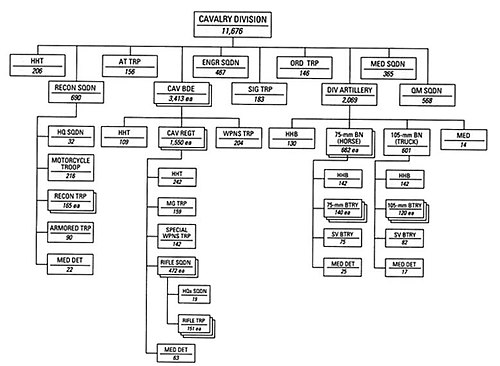The 113th Cavalry Regiment is a cavalry regiment of the Iowa National Guard, with history tracing back to the 19th century Indian Wars.

The 11th Infantry Brigade is an inactive infantry brigade of the United States Army. It was first formed as part of the 6th Division during World War I. It is best known for its service with the 23rd Infantry Division from 1967 through 1971 in the Vietnam War as a light infantry brigade. The brigade is known for its responsibility in the My Lai Massacre.

The 21st Cavalry Division was a division of the United States Army National Guard located in the north eastern United States. The division was composed of personnel from the New York, New Jersey, Pennsylvania and Rhode Island Army National Guards.
The National Guard's 22nd Cavalry Division was created from the perceived need for additional cavalry units. It numbered in succession after the Regular Army Divisions, which were not all active at its creation. Going into World War II, the US Army Cavalry contained 3 Regular, 4 National Guard, and 6 Organized Reserve cavalry divisions as well as 1 independent cavalry brigade.
The 23rd Cavalry Division was a cavalry formation of the United States Army National Guard during the interwar period.
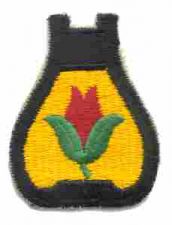
The 24th Cavalry Division was a cavalry division of the United States Army, mostly drawn from the National Guards of the Midwest states. It was created after World War I from the perceived need for additional cavalry units. It numbered in succession of the Regular Army divisions, which were not all active at its creation. Going into World War II, the US Army Cavalry Branch contained three Regular Army, four National Guard, and six Organized Reserve cavalry divisions, as well as one independent cavalry brigade.

The 61st Cavalry Division was an Organized Reserve cavalry unit of the United States Army.

The 62nd Cavalry Division was an Organized Reserve cavalry unit of the United States Army.

The U.S. Army's 63rd Cavalry Division, Organized Reserve, was created from the perceived need for additional cavalry units. It numbered in succession of the Regular Army Divisions, which were not all active at its creation.
The 64th Cavalry Division of the United States Army Organized Reserve was created from the perceived need for additional cavalry units. It numbered in succession of the Regular Army Divisions, which were not all active at its creation. The 64th Cavalry Division was dispersed across the United States. The division was composed of personnel from Kentucky, Massachusetts, Vermont, New Hampshire and West Virginia.

The 69th Infantry Brigade was a brigade of the Kansas Army National Guard and Nebraska Army National Guard, which saw service with the 35th Infantry Division during World War I.
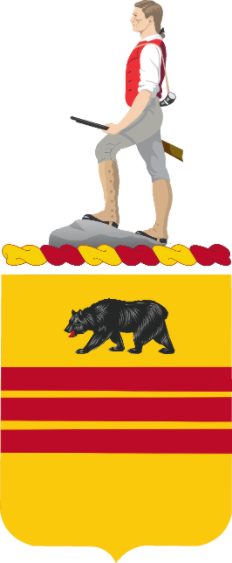
The 308th Cavalry Regiment, commonly referred to as the 308th Cavalry, was a reserve regiment of the United States Army from 1917 until 1942. In September 1918, it was converted into the 65th and 66th Field Artillery, and the 22d Trench Mortar Battery. The units were stationed at Camp Kearny, California. Although demobilized in December 1918, they were re-formed and re-purposed in October 1921 as the 308th Cavalry, an element of the 62d Cavalry Division. During World War II, it was disbanded again. In 1959, the regimental headquarters was transferred to Department of the Army control.
The 154th Cavalry Brigade was a cavalry unit of the United States Army Organized Reserve during the interwar period. Organized in 1922, the brigade spent its entire career with the 62nd Cavalry Division and was disbanded after the United States entered World War II.
The 153rd Cavalry Brigade was a cavalry unit of the United States Army Organized Reserve during the interwar period. Organized in 1922, the brigade spent its entire career with the 62nd Cavalry Division and was disbanded after the United States entered World War II.
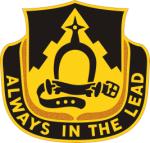
The 303rd Cavalry Regiment is a United States cavalry regiment, currently represented in the Washington Army National Guard by the 1st Squadron, 303rd Cavalry, headquartered at Vancouver, Washington, part of the 96th Troop Command. It incorporates the lineage of the 303rd Cavalry, 303rd Armor, and 803rd Armor Regiments of the Washington Army National Guard.
The 310th Armored Cavalry Regiment was a California-based reconnaissance unit of the United States Army Organized Reserve Corps, which briefly existed after World War II. It was constituted in 1948, partially organized from existing units in 1949, and inactivated in 1950.
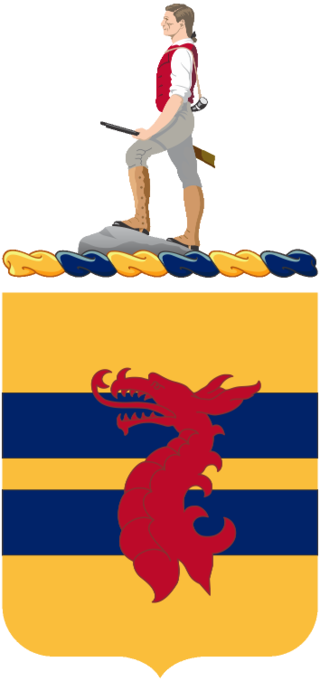
The 318th Cavalry Regiment was a cavalry unit of the United States Army during the interwar period. The unit was activated as an Illinois Organized Reserve unit during the interwar period. It was converted into a signal aircraft warning regiment after the United States entered World War II.

The 319th Cavalry Regiment was a cavalry unit of the United States Army during the interwar period. The unit was activated as a Michigan Organized Reserve unit during the interwar period. It was converted into a tank destroyer battalion after the United States entered World War II.
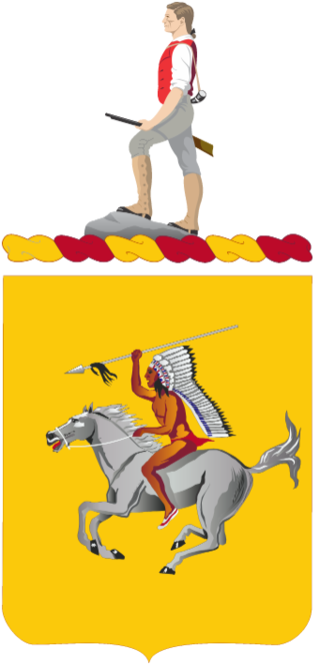
The 322nd Cavalry Regiment was a cavalry unit of the United States Army during the interwar period and from the Cold War to the early 1990s. The unit was activated as an Iowa and Minnesota Organized Reserve unit during the interwar period. It was converted into a tank destroyer battalion after the United States entered World War II. Reactivated in 1971 in the Army Reserve, it was eventually represented by two squadrons of the 89th Division (Training) before both were inactivated in the mid-1990s.

The 124th Cavalry Regiment is a United States Army cavalry regiment, represented in the Texas Army National Guard by 1st Squadron, 124th Cavalry, part of the 56th Infantry Brigade Combat Team at Waco.

